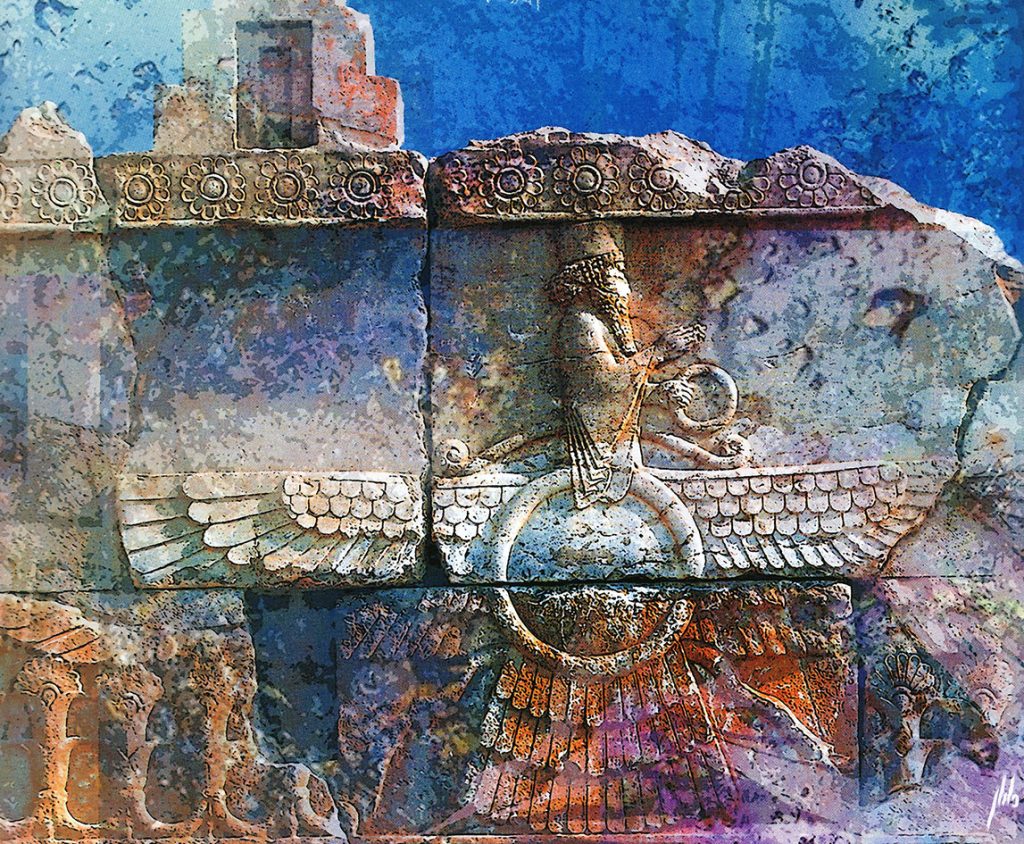Engraved by the Sun-1


“Engraved by the Sun” explores light as both creative force and historical witness. This collection reimagines ancient visual languages through contemporary digital mediums, framing sunlight as the eternal engraver of human civilization.
The works cultivate a dialogue between:
– Luminous presence and deliberate absence
– Material permanence and temporal erosion
– Historical specificity and timeless symbolism
Each piece exists in suspended time, where turquoise bridges earthly and celestial realms, while ritual reds pulse with cyclical renewal against monochromatic ruins.
The sun emerges as primary artist – its rays alternately:
• Sculpting forms as radiant discs
• Fragmenting narratives as fractured beams
• Withholding meaning through calculated absences
Sunlight preserves what human hands cannot:
– The lost signatures of Persepolis’ architects
– The vanished voices of cuneiform scribes
– The collective memory of unnamed artisans
• Layered Archaeology: Digital/analog hybrid surfaces
• Controlled Erosion: Intentional weathering of forms
• Dynamic Asymmetry: Guided visual pathways
Prioritizes conceptual continuity across:
– Physical textures and virtual projections
– Static images and responsive digital tokens
– Traditional displays and immersive installations
The collection dissolves chronology through:
1. Modular Symbols: Faravahar wings and cuneiform strokes liberated from historical context
2. Negative Space: Silent voids inviting contemporary interpretation
3. Light Logic: Solar narratives that behave non-linearly
This project transcends visual documentation to establish sunlight as:
– The last living connection to lost creators
– An active participant in cultural memory
– A bridge between ancient craftsmanship and digital futures
The works don’t merely depict light – they become vessels for its perpetual dialogue across millennia, where every photon carries echoes of those who shaped civilization without leaving names.